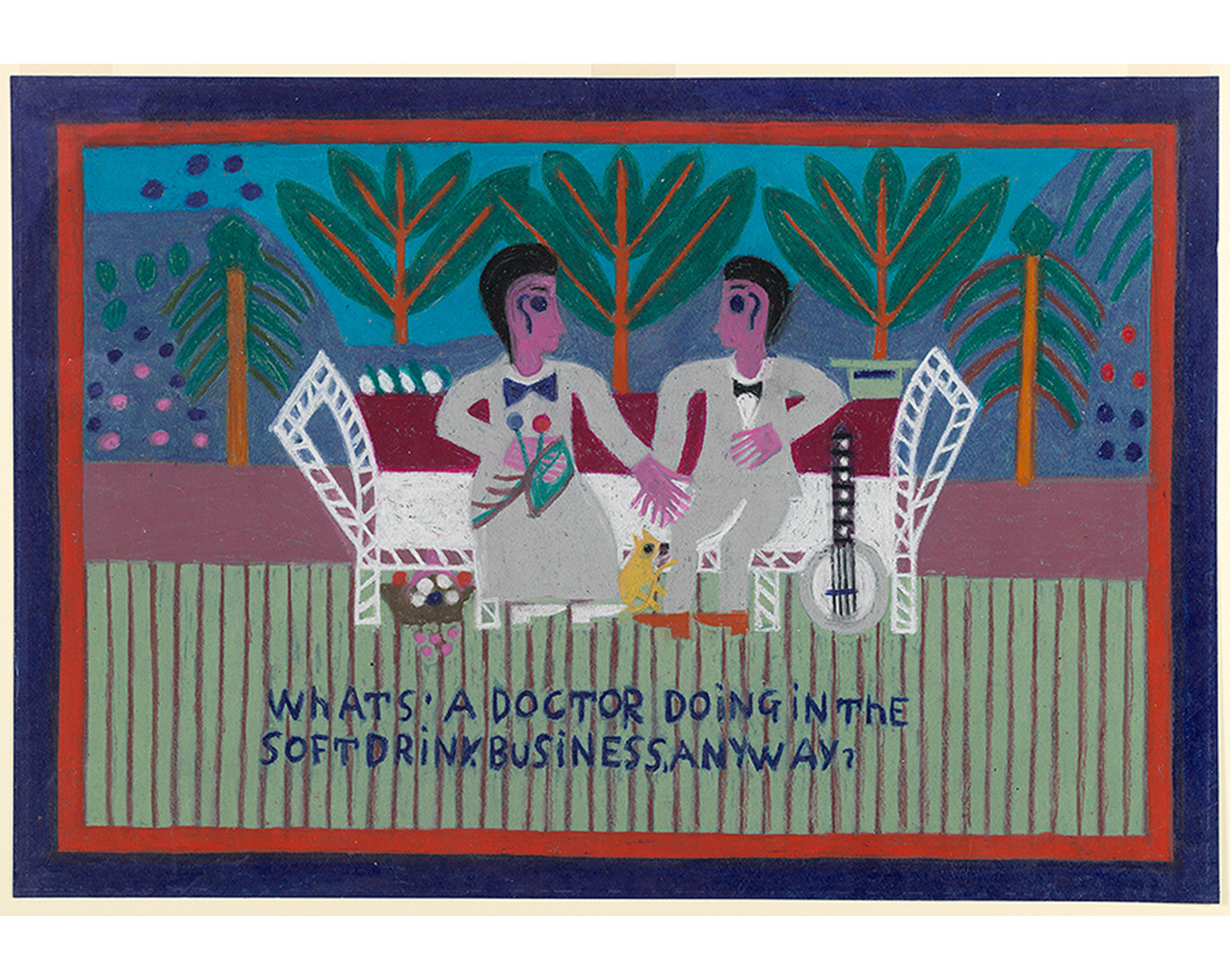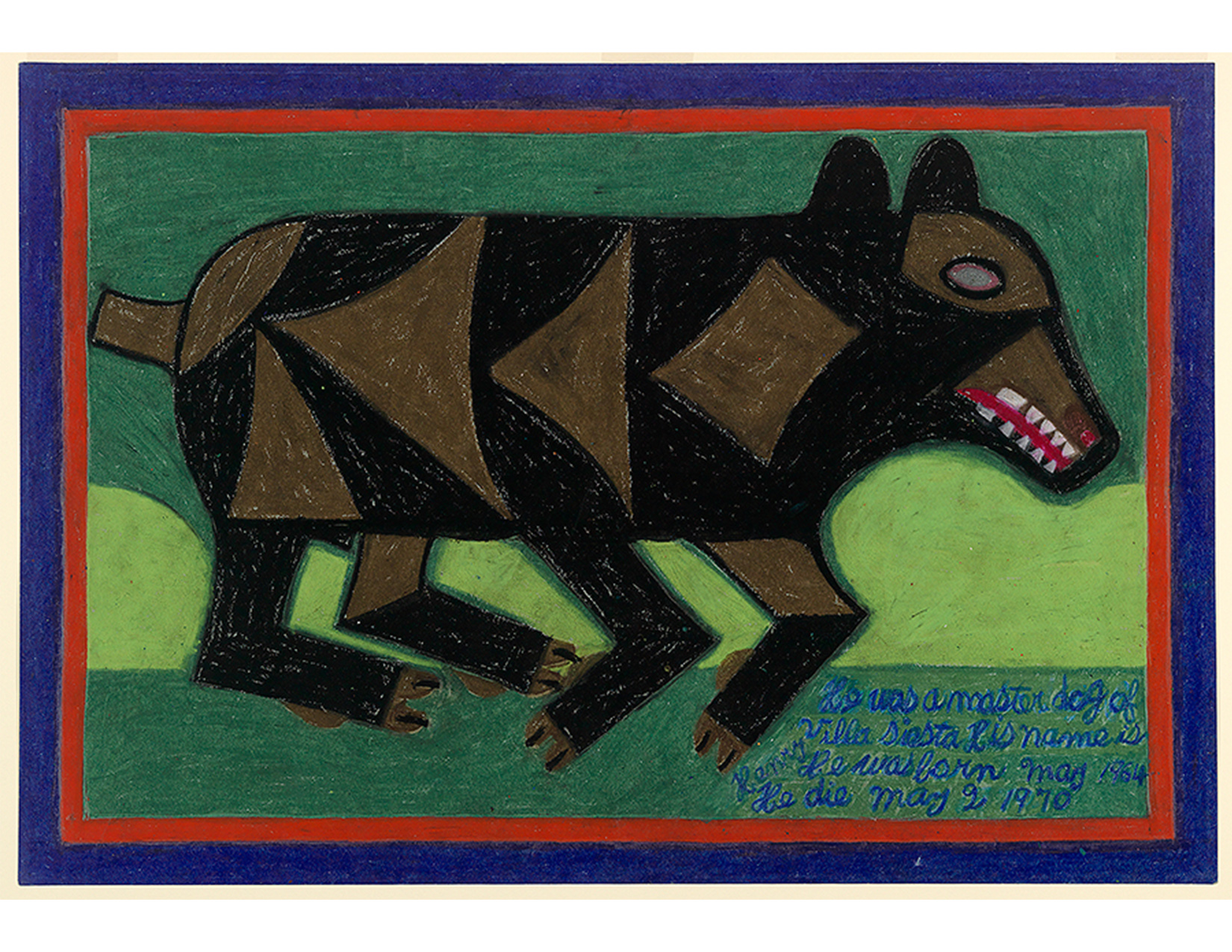
Eddie Arning and “Outsider Art”
Colleen McDermott is the Brown Post-Baccalaureate Curatorial Fellow in the Cunningham Center.
Although it only lasted for a decade, Eddie Arning’s brief period of drawing is remarkably compelling. People have long held a fascination with the idea of “outsider” art—work seemingly untouched by the echo chamber of the modern art world, created by someone who presumed to be entirely unaware of his own unthinking brilliance. However, despite his isolation and unconventional environment, he did not create in a vacuum.
Arning led a relatively conventional life on his family’s farm until his mid-twenties, when he began to have violent, unpredictable outbusts. After he was arrested for an attack on his mother, he spent the next several decades in a Texas mental institution where he was diagnosed with demential praecox, which is now generally known as schizophrenia.
At the age of sixty-six that he began to show an interest in making art, after a hospital nurse gave him crayons and paper to work with. Eventually he switched to oil pastels, as they gave him better control and a wider variety of colors.

Eddie Arning. American, 1898–1993. What's a Doctor Doing in the Soft Drink Business Anyway?, 1970. Craypas on green wove paper. Gift of Dr. and Mrs. Alexander H. Sackton (Ivria Adlerblum, class of 1936). SC 1987.7.2.
Arning would often replicate newspaper and magazine advertisements in his own distinct style. What's a Doctor Doing in the Soft Drink Business Anyway? is based on a Dr. Pepper ad of the same name. While the basic elements of the two pieces are the same, Arning has flattened and brightened the colors, reducing the composition to geometric shapes and clean lines.

Eddie Arning. American, 1898–1993. Master Dog of Villa Siesta, 1970. Craypas on green wove paper. Gift of Dr. and Mrs. Alexander H. Sackton (Ivria Adlerblum, class of 1936). SC 1987.7.3.
Master Dog of Villa Siesta, however, seems to be a memorial to a deceased pet dog. The writing in the lower right corner reads:
Arning tended to render all of his figures—both human and animal—in profile. Another curious aspect of Arning’s drawings is that he drew a picture frame around each piece, even if his source material did not include one.
In 1973, Arning’s symptoms of mental illness subsided, and he left the nursing home to live with his sister. This change in environment must have affected him, as he stopped drawing within a year.